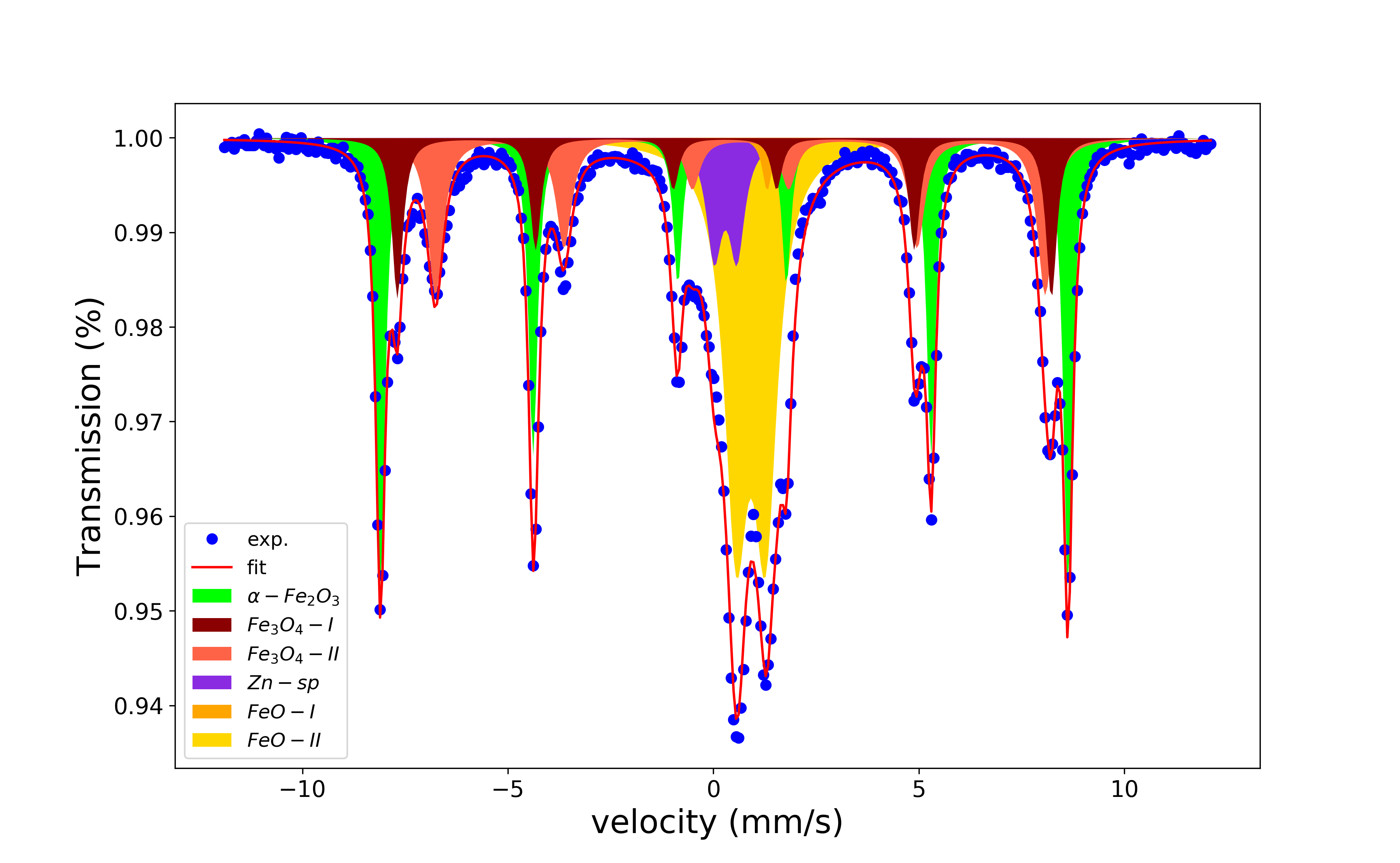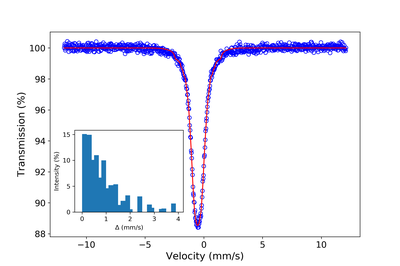Study of ferrous alloys by Mössbauer spectroscopy
The Mössbauer effect is the recoilless nuclear resonance absorption of gamma rays and it is especially suited for the study of Fe-containing alloys. One of the key features of Mössbauer spectroscopy is the fact of being a local probe, enabling the possibility, on the one hand, of studying chemically and structurally disordered materials and, on the other hand, of studying site occupancies or vacancies in crystalline materials. This makes this technique one of the few spectroscopies able to do so without the use of synchrotron radiation. This is especially useful in the study of metals and alloys where, for example, the substitution of some Fe atoms in the structure can enhance or reduce the magnetism in the sample. The sensitivity of Mössbauer spectroscopy has been used to identify the presence of small amounts of phases in compounds. This is of special relevance for environmental studies for the detection and quantification of contaminants but it is also of industrial interest, especially in the metallurgy industry, because it opens the possibility of getting economic benefits of the wastes after the identification and removal of the non-desired elements or phases. We study the effect of minor additions of several elements in the crystallization route of several families of metallic glasses and high-entropy alloys and correlate the results with complementary techniques like x-ray diffraction to gain insights into the macroscopic effects of changes in the local structure. We also characterize industrial wastes to identify the several phases present to help in the recycling process and study the effect of the environment on the redox state oxide glasses.
 |  |
|---|
 |
|---|
Share: